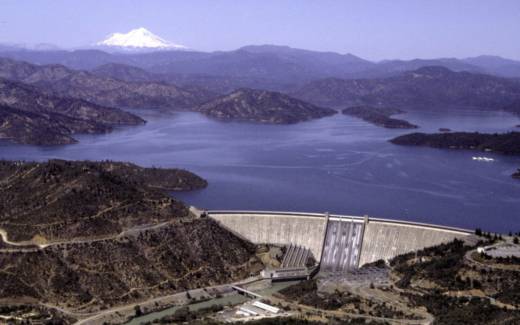And California’s policy continues to add green power to the grid: Large-scale solar generation increased by 32 percent and wind generation increased by 11 percent.
That trend is in keeping with a report issued last month by the California Public Utilities Commission that found that the state’s major utilities have met or will soon exceed the target of 33 percent clean electric energy by 2020.
On the other hand, emissions from oil refineries, transportation fuels and cement plants increased slightly. In the case of the cement manufacturing, the air board attributed the increase to ramped up production.
The report does not take into account all the state’s greenhouse gas emissions in any given year; only those from entities covered under cap and trade are required to report. Much of the highly polluting transportation sector, for example, is not regulated.
The air board report did not attribute the emissions decrease to any one of the state’s myriad programs intended to reduce energy consumption and industrial pollution. But the world heard a different story from Brown’s during his trip to attend the U.N Climate Change Conference in Bonn, Germany.
The governor was an enthusiastic salesman of the cap-and-trade program, in which certain industries are required to limit their emissions. If they operate under their caps, the companies may sell any carbon “credits” in an auction or on the private market.
When laying out the California environmental success story to the world last month, Brown most often mentioned cap and trade as the cornerstone of the the state’s policies. At one point, the governor met with Chinese officials in Bonn, and suggested the nation, as the planet’s largest polluter, join California’s carbon trading market, which already includes the Canadian province of Quebec.
The most recent auction results indicate why cap and trade is popular with some legislators, having raised nearly $5 billion since its inception. The end of November’s permit auction achieved record-high sales of $800 million, with every permit sold.
But it is not a prime mover of greenhouse gas reductions, and the air board considers it an adjunct program supporting California’s other policies. Brown, however, has made cap and trade a signature policy, and he’s its fiercest defender.
The governor expended enormous political capital pushing through legislation to extend cap and trade until 2030. At one point during this summer’s debate, he addressed a state Senate committee and told legislators, “This is the most important vote of your life.”
Given the emphasis he’s placed on the program, it seems to under-deliver on real carbon-cutting results. But in an interview with CALmatters, Brown denied he gives cap and trade primacy over other of the state’s carbon-cutting programs.
“That’s not true. I don’t talk only about it,” he said during the interview in Bonn. “I talk about solar, about electric cars. Energy efficiency. You want to say cap and trade is not that important (for greenhouse gas reduction). I know that. I’m Mr. ‘It Ain’t That Much.’ It isn’t that much. Everybody here is hype, hype to the skies.”
Researchers have reached the same conclusion. Analysts at Near Zero, a think tank affiliated with the Carnegie Institution for Science at Stanford University, presented an analysis of state climate policy at an Energy Seminar in October and found that the last economic recession is responsible for about half of observed greenhouse gas reductions since the passage of the law that instituted cap and trade.
This finding is consistent with a Legislative Analyst’s Office report from earlier this year.
For Democratic Assemblywoman Cristina Garcia of Bell Gardens, it’s time to recognize the other programs that are helping the state meet its emission-reduction goals.
“We definitely have a responsibility when we are out here on the world stage and saying to people, learn from us. One is making it clear that we have a portfolio of initiatives,” said Garcia, who was also attending the U.N conference in Bonn. As example, she cited the state’s requirement to procure power from renewable resources, its clean air policy, and its push to electrify the transportation fleet. “Cap and trade is a piece of it,” she said, “but it’s not all of what we do.”
